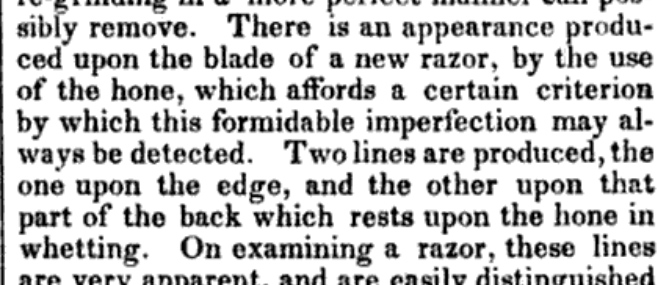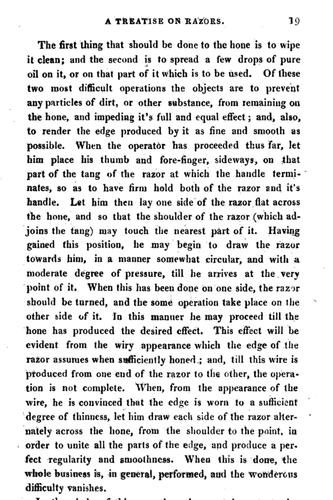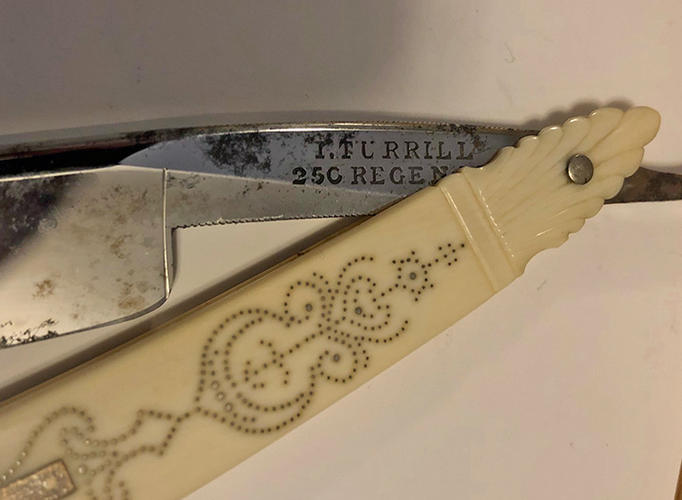Results 1 to 10 of 17
Threaded View
-
12-23-2018, 06:25 PM #7

The whole 'who made that' question is one I've chased a lot, myself. I did a big writeup on it here.
The short version is that the tang stamp only tells you who put in the work order, not where it was made. Those Rodgers razors could've been made at Marshes & Shepherd's workshops, or the Butcher brothers, or the Raggs. There isn't really any way of knowing who actually made them unless they're from a tiny number of very small, historically identifiable manufacturers.
While I've definitely come across one or two that were honed that way, it was not the accepted norm.
Here's Ebenezer Rhodes, Sheffield manufacturer & Master Cutler on the subject in 1822:

And here's Benjamin Kingsbury, an influential London -- the edition was most recently updated around the same time as Rhodes, but it was first published in the late 1700's.

It's called pique work, because very early on English manufacturers realized they could charge more for French words.
They did it exactly that way. I've seen maybe as many as 4 different gauges of wire used. Ideally, each pin would be very delicately hammered to make it more snugly fit, then ground flat. It worked best on ivory or bone, but I've also seen it in tortoise and very occasionally horn.
I can only guess at how accurate this wikipedia page is, but I don't have any real reason to doubt the dates it gives. Razor scales as ornate as what's shown there are very rare.-Zak Jarvis. Writer. Artist. Bon vivant.
-


 91Likes
91Likes LinkBack URL
LinkBack URL About LinkBacks
About LinkBacks










 Reply With Quote
Reply With Quote